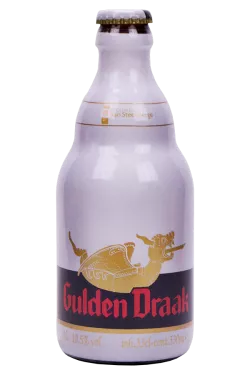Van Steenberge
Wie Deutschland hat auch Belgien eine ereignisreiche und vielfältige Bierhistorie. Das Handwerk, das von Mönchen bereits im Mittelalter ausgeübt wurde, hat auch heute noch einen hohen Stellenwert und wird von Gourmets und Bierliebhabern gleichermaßen geschätzt. Belgisches Bier ist auf der ganzen Welt bekannt und zeichnet sich durch seinen kräftigen Charakter, den hohen Alkoholgehalt und seinen ausgefeilten Geschmack aus. Ein traditionelles Brauhaus in Belgien ist Van Steenberge.
Eine Brauerei mit vielen Namen
Die Geschichte der Brauerei begann im Jahr 1784. Jean Baptiste de Bruin gründete das Brauhaus und stellte unter dem Namen De Peer feines Bier her. Nach seinem Ableben ging das Zepter an seine Witwe, die die Führung am Ende ihres Lebens an ihren Cousin Jozef Schelfaut weitergab. Der erste Van Steenberg an der Spitze der Brauerei betrat die Bühne einige Zeit später, als er Jozefs Tochter Margriet heiratete. Van Steenberg war eigentlich Politiker und Wissenschaftler, seine Arbeit als Mikrobiologe an der Brauerschule in Gent machte ihn allerdings zum idealen Kandidaten für die Leitung einer Brauerei. Er kombinierte unternehmerisches Geschick mit einem guten Gespür für den Biermarkt und verhalf der Brauerei zu wachsendem Erfolg. Beide Weltkriege überstand die Brauerei ohne große Schäden. Modernisierungen und Erweiterungen vergrößerten die Möglichkeiten und das Sortiment konnte verbreitert werden. Nachdem die ersten Schritte der Brauerei unter dem Namen De Peer gegangen wurde, hieß die Brauerei anschließend Bios. Den Name Van Steenberge führte der Sohn von Margriet und ihrem findigen Ehemann ein.
Doppelt fermentiert hält besser
Heute leitet die siebte Generation der Familie die Brauerei und setzt das kulinarische Erbe ihrer Vorfahren mit Herzblut und Leidenschaft fort. Das Bier, das dem Brauhaus einen guten Namen in der nationalen und internationalen Bierszene machte, wird nach traditioneller Brauweise hergestellt. Neuste Technik und ein Repertoire an von Generation zu Generation überlieferten Rezepturen ergänzen die Braukunst der Jahrhunderte mit einer Prise Moderne. Aus feinsten Rohstoffen werden köstliche Biere wie das weltbekannte Gulden Draak gebraut. Typisch belgisch ist die zweite Fermentation: Nach Vollendung des Brauprozesses wird das Bier abgefüllt und erhält eine Extraportion Hefe und Zucker. Mithilfe dieser kleinen Beigabe startet das Bier in der Flasche eine zweite Gärung, die dem Braustück seine Komplexität und seinen runden, vollmundigen Körper verleiht. Die Biere werden für zwei Wochen gelagert, eignen sich allerdings für eine wesentlich längere Lagerzeiten. Drei Monate machen die Aromatik mild und fruchtig, achtzehn Monate vertiefen den Geschmack und verstärken das Volumen.
Ganz egal, ob Du Dein Gulden Draak ganz frisch trinkst oder es für einige Monate in Deinem Keller lagerst — es ist zu jedem Zeitpunkt ein Hochgenuss!



